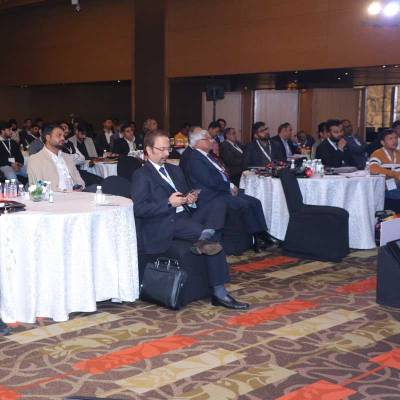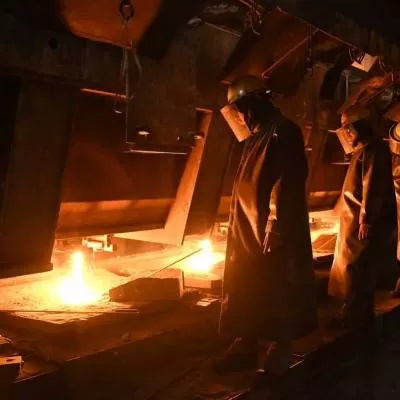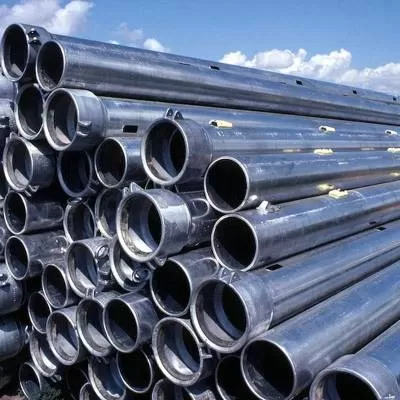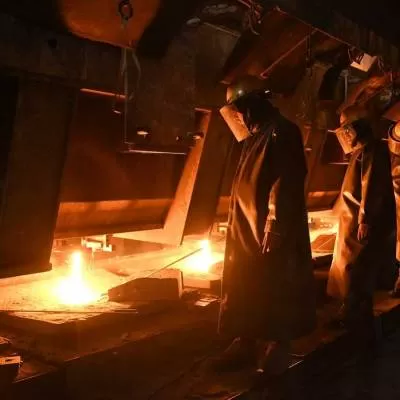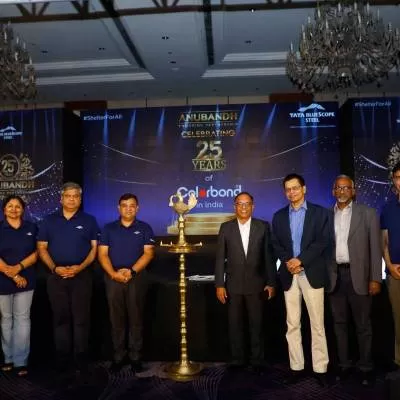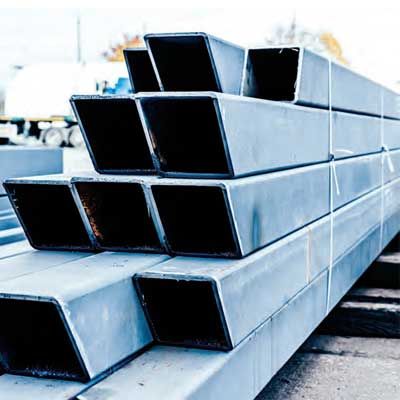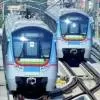- Home
- Building Material
- Steel
- Top Challengers 2018-19
Top Challengers 2018-19
Read full article
CW Gold Benefits
- Weekly Industry Updates
- Industry Feature Stories
- Premium Newsletter Access
- Building Material Prices (weekly) + trends/analysis
- Best Stories from our sister publications - Indian Cement Review, Equipment India, Infrastructure Today
- Sector focused Research Reports
- Sector Wise Updates (infrastructure, cement, equipment & construction) + trend analysis
- Exclusive text & video interviews
- Digital Delivery
- Financial Data for publically listed companies + Analysis
- Preconceptual Projects in the pipeline PAN India
Despite difficulties like stalled projects, liquidity issues and debt payment defaults leading to a challenging scenario for India Inc, a few companies have managed to excel and post growth on significant parameters. In our yearly endeavour, CW identifies the Top Challengers of FY2019.Construction & ContractingCapacit’e Infraprojects Gayatri ProjectsPNC InfratechPSP ProjectsWelspun EnterprisesReal EstateBrigade Group Puravankara SobhaSteelElectrotherm India Gallantt Ispat To remain in business and be successful, growth and profitability are important. Both factors are necessary for a company to survive and remain relevant to customers, investors, analysts and, yes, even lenders. While profitability is critical to a company’s current existence, growth is crucial to long-term survival. And one thing every organisation must understand is that growth does not occur in a vacuum by mere chance – it is the result of myriad forces working together. At a time when domestic growth factors remained under pressure, FY19 was a challenging time for India Inc. The issues were many, ranging from liquidity crunch, rising bad loans, loan defaults (principal as well as interest), slowing capex and slower automobile growth to delayed or stalled projects, financially inviable projects and an insolvency-like situation for a few large organisations. Although many have expressed the opinion that tightening of regulations by the overnment has contributed to such a scenario, we believe that this is a short-term hiccup; in the long term, this cleaning-up process will prove to be positive. Despite all the obstacles, uncertainties and challenges, a few entities managed to persevere and prevail, posting growth and exhibiting excellence. And these are the companies, from the universe of construction, contracting, engineering and building materials, that CW honours each year as Top Challengers. To identify our heroes, we have followed a rigorous method by focusing on parameters such as net sales, profit before depreciation interest and tax (PBDIT) and net profit. While sales figures reflect how the demand for products or services is moving, PBDIT figures guide us on how the company is doing at the operational level and its efficiency. As for net profit, it clearly shows how much is left for shareholders. Further, in the context of the current series of defaults on payment by a few companies, we have closely observed if companies analysed by us have risked their debt profile or leveraged too much; hence, parameters like long-term and short-term borrowings have been examined. We have also tried to analyse cash generation and investments of the company. With such comprehensive observations, the companies that have displayed the ability to grow have proven to be true challengers, showing their mettle in a difficult economic environment.As for the three parameters – net sales, PBDIT and net profit – we have selected companies that have shown improvement in at least two of the three. For instance, if a company has managed to show an increase in sales but failed to show improvement in PBDIT and net profit, it has not been considered. Further, we only considered companies with a market capitalisation of over `500 crore with the ability to post a profit in FY19. As a few companies have not conducted their annual general meeting, we sourced data from the annual figures announced in the March 2019 results. We have made a few adjustments. For example, for companies with a fiscal closing other than March 2018, the trailing four quarter financial performances were considered. And companies that have not yet announced the March 2018 quarter results have not been considered. Apart from this, a few organisations chose not to participate in this process and, hence, do not figure in the list. With regard to the scoring, we provided a weighted average to the three parameters: 40 per cent to sales, being a prime growth driver, and 30 per cent each to PBDIT and profit after tax (PAT). After ranking the companies on growth in percentage terms (FY19 over FY18), the rankings were provided with weightages. This process helped us to rationalise the process and all players were rated on similar ground. In some cases, we offered the selection panel the right to veto by adhering to qualitative factors. The final list is an extensive one with the panel taking into account almost all the aspects that needed to be considered. We have chosen not to rank our Top Challengers as they belong to diverse sectors – indeed, they are all winners who have braved the odds and silenced the sceptics. Read on and find out more…“Our entry into the affordable housing segment has been a major factor.”- MR Jaishankar, Chairman & Managing Director, Brigade GroupBrigade is one of India’s leading developers with over three decades of experience in building positive experiences for all its stakeholders. The company has transformed the skylines of Bengaluru, Mysuru, Mangaluru, Hyderabad, Chennai, Kochi and Ahmedabad with its developments across the residential, office, retail, hospitality and education sectors. The company is among the few developers who enjoy the reputation of developing Grade-A commercial properties. The license owners of the World Trade Center across southern India, its commercial spaces have top international clients operating out of them. Since inception in 1986, Brigade has completed over 250 buildings, amounting to 66 million sq ft of developed space, in the residential, office, retail and hospitality sectors across seven cities.MR Jaishankar, Chairman & Managing Director, Brigade Group, shares more….Name one major challenge faced in FY2018-19. How did the company approach the same?Apart from the tough market conditions, a lot of it was regulatory challenges in FY18-19. And the challenges were not just one, but multiple. Change in GST for real estate was one major regulatory challenge, which could really turn the business topsy-turvy. And, if one were not careful on managing that, it was a sure way of going bankrupt. Only people in the business would know the gravity of this challenge. The only way for us as a company to stay safe was by understanding the gamut of the problem and trying to resolve it in a multifold way. Different steps were required to be taken in different situations. Another challenge the sector has been facing for a couple of years is the financial challenge. The company managed this by ensuring proper discipline and strict control of finances only for the purpose of the business, and not diverting funds for any other reason. Also, we focused on sales and collections, which is an important aspect, to ensure a net positive operating cash flow. What is one decision you consider the biggest contributor to the company’s growth in FY2018-19?Our entry into the affordable housing segment has been a major factor. We have launched nearly 2,000 units in the affordable housing segment and have received approvals to launch another 6,000 apartments in this category. That is a major decision and we have entered this segment at the right time; it is the flavour of the season.Name one single factor you avoided that could have otherwise impacted the company’s topline and bottomline.We have consciously avoided entry into the NCR and Mumbai markets, despite receiving nearly two dozen proposals. The intention has been to focus on few markets and not to stretch our management bandwidth and resources.Going forward, what are your plans for the company’s growth in FY2019-20?We are formally launching a large integrated township, which will include apartments of various sizes along with offices, retail, mall and multiplex in the IT belt, which can range from 6 to 12 million sq ft. This will be a major project for us. Also, we are trying to divest equity in our hospitality segment. While we are presently operating 1,200 rooms, we should reach 2,000 rooms by by FY20. So, in order to further grow beyond 2,000 keys, we are planning to dilute our equity in the hospitality company to grow further in the sector. “When it would have been reasonable to break even, we continued to report growth.”- Rohit Katyal, Executive Director and CFO, Capacit'e InfraprojectsCapacit'e Infraprojects embarked on its journey in 2012. In a short span, the company has earned the distinction of being a preferred name in the construction of high-rise and super high-rise buildings, townships, commercial and IT/ ITES, institutional and retail across India. Rohit Katyal, Executive Director and CFO, Capacit'e Infraprojects, shares more…Name one major challenge faced in FY2018-19. How did the company approach the same?We grew despite the weakening business cycle, which was a validation of how we had selected to grow the business since inception. During the first half of FY2018-19, the company reported a 34 per cent growth in revenues and 21 per cent increase in PAT over the corresponding period of the previous year. The second half proved more challenging following the collapse of a large Indian non-banking finance company, which slowed credit disbursal, enhanced systemic caution, moderated credit for the construction and real-estate sectors and resulted in a virtual liquidity paralysis within the Indian economy.During this phase, when it would have been reasonable to break even, the company continued to report growth: Revenues grew 34 per cent and PAT strengthened 21 per cent compared to the corresponding period. Of the profit generated during the entire year, 52 per cent was generated in the second half; besides, 50 per cent of the order book accretion during the year under review transpired in the second half, an index of the company’s focus on business sustainability.At Capacit’e, we continued to strengthen our business during this challenging phase with a distinct focus on controls, checks and balances. One decision you consider the biggest contributor to the company’s growth in FY2018-19?In FY2018-19, we kept our focus on acquiring challenging projects that would test our capabilities and competence. We also laid emphasis on diversifying our portfolio and have been successful in acquiring projects like retail malls, healthcare facilities and IT parks. In India, the public sector will be a major driver for the building construction sector in years to come and we have already equipped ourselves to cater to this market. One single factor you avoided, which could have otherwise impacted the company’s topline and bottomline.As a philosophy, we will not take any projects below our internal margin benchmarks. Every project has the right price and sometimes the cut throat competition undermines this fact. This can be detrimental to the client, to the project and ultimately to the contractor in the long run. As a conscious effort, we would keep our focus on providing efficient construction services to any quality-conscious client who would understand the concept of ‘Right Price’.What are your plans for the company’s growth in FY2019-20?In India, the existing metro cities can only grow through progressive verticalisation. And, this global trend of verticalisation will play out in India in a bigger way, strengthening the relevance of Capacit'e’s business model, focus and competence.To add to this reality, the quantum of urban residential shortage in India is estimated at 18.78 million and only expected to increase. There is a healthy growth concurrently coming out of the non-residential structure. It took India 60 years to emerge as a $1 trillion economy, and the country is now expected to emerge as a $5 trillion economy by 2025. With this, we believe that a number of adjacent business opportunities – commercial, retail, logistics and IT sectors – will emerge. This development will make it possible for a specialised player like Capacit'e Infraprojects to enter new segments by leveraging its demonstrated competence.“Sale of epoxy bars helped the company capture a completely new market.”- Shailesh Bhandari, Managing Director, Electrotherm IndiaOver 25 mt of steel is produced every year on induction furnaces manufactured by Electrotherm, established in 1982, and supplied in 52 different countries around the world. The company has a state-of-the-art fully integrated steel and pipe plant in Kutch, Gujarat. The integrated steel plant comprises a blast furnace, sinter plant, induction melting furnace, ladle refining furnace, rolling mills and ductile pipe-making facilities. The company is the market leader in Gujarat for its TMT bars and is among the largest ductile iron pipe producers in the country. Besides engineering and steel, the company has presence in electric vehicles, transformers, transmission line towers and education. It achieved gross integrated sales of Rs46.81 billion in FY18-19, registering a growth of 31.66 per cent over the previous year. Over the past 35 years, the company has not only built highly technological and difficult-to-replicate businesses but strong brands and products utilising these technologies. Shailesh Bhandari, Managing Director, Electrotherm India, shares more…Name one major challenge faced in FY2018-19. How did the company approach the same?The company increased its steel and TMT manufacturing capacity in FY17-18. However, 2018-19 was turning out to be a slow year with respect to steel demand. Also, the demand was shifting from lower-quality grades like Fe500 to more critical grades like Fe500D and Fe550D. More demand was coming from the infrastructure sector where, traditionally, the company did not have a strong presence. The company initiated major sales and marketing efforts to position itself in the infrastructure material supplies space and the team worked hard to put various government approvals in place. This helped the company increase its TMT bars sale from 400,642 tonne to 526,900 tonne, an increase of 31.51 per cent in a slow market. One decision you consider the biggest contributor to the company’s growth in FY2018-19?The company saw major demand coming from critical infrastructure projects for products like epoxy-coated TMT bars, especially in the Mumbai region (costal belt). There was no integrated producer in the country of these coated bars. The company saw this as a big opportunity and set up its epoxy-coated plant with India’s first BIS certification. The sale of epoxy bars alone contributed to `1.07 billion in FY18-19 and helped the company capture a completely new market where it did not have a presence earlier.Name one single factor that you avoided, which could otherwise have impacted the company’s topline and bottomline.The steel market in FY18-19 was extremely volatile and prices were fluctuating widely. The company adopted the policy of not booking larger quantities of raw material and selling larger quantities of finished goods at one go. This ensured that the average realisation of finished goods and average cost of raw material balanced with each other and generated good margins for the company in a difficult market. Going forward, what are your plans for the company’s growth in FY2019-20?The company has established a strong presence for its ET TMT bars in the infrastructure space. It is seeing increasing demand coming from this sector, where more and more roads, bridges, tunnels, ports and airports are being built. The company expects and plans to sell over 0.5 million tonne of TMT, epoxy-coated and C&B bars during the year, all produced using the state-of-the-art integrated induction-LRF technology to achieve a sizeable growth in the TMT market.“The company has avoided borrowing funds from lenders and bankers.”- Mayank Agrawal, CEO, Gallantt IspatGallantt Group made a humble beginning in 1984, with an investment in an oil extraction plant. At present, the group runs two primary steel plants with a captive power plant in Uttar Pradesh and Gujarat in the name of Gallantt Ispat and Gallantt Metal, respectively. Gallantt Ispat operates a steel plant, which comprises a sponge iron unit, steel melt shop, a rolling and block mill and wire rods, and a 53-MW captive power plant for uninterrupted power supply to the entire facility. Mayank Agrawal, CEO, Gallantt Ispat, shares more… Name one major challenge faced in FY2018-19. How did the company approach the same?There was a shortage of raw material, especially iron ore. To overcome this crisis, we entered into a long-term understanding with Essel Mining & Industries, a Birla Group mining company in Odisha, with a commitment that 80 per cent of the required iron ore will be procured from them. This understanding helped us get discounts and finalise weekly sourcing as per requirement. Our raw material is transported through railway rakes in bulk quantity. In 2018-19, there was a major crisis in the availability of railway rakes, owing to which we faced great difficulty in the beginning of the year. After vigorous persuasion with the railway authorities, we were upgraded as ‘Priority C’ category where the Railways allots the total quantity of rakes from various railway zones as per the requirement. This enabled us to overcome this transportation crisis. One decision you consider the biggest contributor to company’s growth in FY2018-19?Naturally, nobody risks expanding capacity during recession. But we expanded our steel making capacity twofold, making it 330,000 mtpa, and the power plant to 53 MW with an investment of `2.5 billion. Our decision was right as we could successfully complete the expansion programme at a lower capital cost, which resulted in negligible borrowing and reduced the interest burden. And, when we commenced commercial production, the steel markets improved, helping the company reap the benefits of the expanded capacity.One single factor you avoided that could have otherwise impacted the company’s topline and bottomline.The company has avoided borrowing funds, which has kept us away from the debt trap and burden of loan repayment and interest thereon. All our expansion programmes are going on with internal accruals. We are not solely dependent on indigenous procurements of raw materials and are importing raw materials at competitive prices.What are your plans for the company’s growth in FY2019-20?The company is undergoing further capacity enhancement of all manufacturing facilities and backward integration by adding a pelletisation plant to produce 800,000 mtpa of iron pellets with a capital expenditure of Rs.8 billion. Post this, the finished steel making capacity increased from 3.30 lakh mtpa to 6.60 lakh mtpa. The expansion is expected to commence commercial production from March 2021 and completed in March 2022 in a phased manner.Gallantt has forayed into the field of real estate with the development of a 12 lakh sq ft built-up area in JV with The Shalimar Group. Further, the company has a land bank of about 12 lakh sq ft in Gorakhpur, which will also be developed into world-class commercial and residential complexes. The group is coming up with a five-star and three-star hotel in Gorakhpur in collaboration with Taj Vivanta. The group has already signed an agreement with Indian Hotels Company for construction of the proposed five-star hotel. Last, we are planning to construct a multiplex cum three-star hotel-cum-banquet hall too.“We are happy to have avoided HAM projects.”- TV Sandeep Reddy, Managing Director, Gayatri ProjectsGayatri Projects is one of India’s leading construction and infrastructure companies with interests in EPC, highways and power plants, and active operations in 19 states. Its EPC operations, the mainstay of the company, include roads, bridges, railways, dams, irrigation canals, underground mines, steel plants and power plants. Gayatri has also developed seven highway assets, now held by its associate company, Gayatri Highways, and has co-developed a 2,640-MW thermal power complex with Sembcorp Utilities of Singapore. Established in 1975, the company now has an annual revenue in excess of `35 billion. TV Sandeep Reddy, Managing Director, Gayatri Projects, shares more…Name one major challenge faced in FY2018-19. How did the company approach the same? Today, Gayatri Projects has industry-leading margins in terms of EBITDA and project profitability, but we are still being held back by debt from earlier infrastructure asset investments. We are actively pursuing opportunities to monetise our power investments, as well as to monetise claims we have been awarded from contracts from earlier years. Once we complete these activities and become an asset-light EPC player, we can double down on upcoming opportunities and become the dominant player in highway and irrigation construction.What is one decision you consider the biggest contributor to the company’s growth in FY2018-19?Over the past five years, our single best decision was to go with the cluster-bidding model where we can leverage economies of scale and synergies. In the future, we hope to use this expansion strategy to establish a monopoly across India in key focus areas like highways. At the same time, we are actively leveraging cutting-edge technologies like Internet of Things (IoT) and artificial intelligence (AI) to increase profitability. We have looked closely at the systems being used by construction industry leaders across the globe, and are proud to say that our integrated project and equipment management platform is the most advanced in the world. Name one single factor you avoided that could otherwise have impacted the company’s topline and bottomline.We continue to maintain our position that we are happy to have avoided HAM projects. A lot of newer players who have not already experienced the difficulties of the asset-heavy model have been gung-ho about HAM projects but I think we are already seeing evidence of the challenges. We are going to continue focusing on an asset-light EPC strategy.Going forward, what are your plans for the company’s growth in FY2019-20?We are taking a three-pronged approach for future growth in the topline and bottomline:Bidding for new highway projects in clusters where we already have synergies and economies of scale.Expanding and consolidating our foothold in specialised industries like underground mining and water supply.Leveraging technology for improved project execution and equipment utilisation.“The company’s positive approach has been the biggest contributor to its growth in FY19.”- Yogesh Kumar Jain, Managing Director, PNC InfratechPNC Infratech is an integrated infrastructure company with expertise in expressways, highways, bridges, flyovers and airport runways and the development of industrial areas across several states in India. The company is currently executing 20 expressway, highway and airport runway projects of over Rs140 billion on EPC model. It is also implementing seven highway projects on HAM at an aggregate of over `90 billion. The company has a healthy balance sheet with over Rs.21 billion net worth as on March 31, 2019. Yogesh Kumar Jain, Managing Director, PNC Infratech, shares more…Name one major challenge faced in FY2018-19. How did the company approach the same?During FY17 and FY18, although the company had a substantial amount of unexecuted order book and was geared up to commence execution, its hands were virtually tied to move ahead, primarily owing to non-availability of required land and other impediments totally beyond its control and jurisdiction. Given the challenge, the company took proactive measures, adopted multipronged strategies and assumed higher responsibilities than envisaged in the contracts, to support the authorities in expediting the process of land acquisition and removal of encumbrances. These concerted efforts resulted in the declaration of appointed dates and commencement of execution for most awarded projects in the later part of FY18 and FY19, resulting in a quantum jump in both the company’s topline and bottomline in FY19. Revenue, EBITDA and PAT steeply increased by 67 per cent, 43 per cent and 29 per cent in FY19 over FY18 on a standalone (EPC) basis. The consolidated revenue, EBITDA and PAT also grew significantly in FY19.Also, with rising NPAs, majority of banks and financial institutions refrain from making any fresh commitments of term loans to projects. Amid such challenges, PNC Infratech achieved financial closure for three of its HAM highway development projects for an aggregate cost of `45 billion in FY19 ahead of schedule, owing to the company’s consistently healthy balance sheet and credit rating. One decision you consider the biggest contributor to the company’s growth in FY2018-19?Despite persistent delays in making vacant land available for construction by project proponents, the company was never discouraged and spared no efforts to mobilise resources, including positioning men, machinery and materials with operational readiness to commence execution immediately upon the removal of hindrances without any lead time, and accelerate progress. A positive approach with enduring courage in challenging circumstances has been the biggest contributor to its growth in FY19. Name a single factor that you avoided, which could otherwise have impacted the company’s topline and bottomline. With EPC in the roads and highways sector being the company’s core strength, we avoided venturing into new sectors where we did not find synergy with our expertise. What are your plans for growth in FY2019-20? With over `120 billion unexecuted order book at the beginning of FY20, well-progressing physical execution across projects, a large fleet of construction plant and machinery, a workforce of more than 9,000 with proven abilities and excellent financial health, the company is poised to scale new heights in terms of overall growth in FY20, both on a standalone (EPC) and consolidated basis. We expect securing certain new project orders during the reaming period of FY20. “In FY2018-19, the company booked its highest ever revenue and net profit.”- PS Patel, Chairman, Managing Director & CEO, PSP ProjectsEstablished in 2008, PSP Projects is among the fastest growing building construction companies in India.Having recorded an excellent growth trajectory in just 11 years since inception, the company has a proven track record in delivering projects on time and with quality in diverse industry segments, such as industrial and pharmaceutical plants, hotels and hospitality, hospitals, educational institutes, commercial and residential projects and marquee government projects. The company enjoys a strong presence in Gujarat with gradual expansions in western and southern India. PS Patel, Chairman, Managing Director & CEO, PSP Projects, shares more…Name one major challenge faced in FY2018-19. How did the company approach the same?During the previous year (FY 2017-18), the company bagged its largest construction contract: A single Rs.15.75-billion contract to construct Surat Diamond Bourse (a turnkey project of 6.6 million sq ft). It was an achievement for the company on one end; but on the other, it was the biggest challenge for a company – whose earlier biggest executed project was just `2.33 billion – to complete this project in 30 months. As a result of detailed milestone planning, resource management and involvement by top management, the company has so far achieved an exceptional work progress at site. Looking at the progress, we are confident that the project will be handed over to the client on time as desired.What is one decision you consider the biggest contributor to the company’s growth in FY2018-19?In FY 2018-19, the company booked its highest ever revenue at Rs.10.44 billion and net profit at `0.90 billion, since inception. The biggest contributor that made this possible is our Surat Diamond Bourse project. With a contract value of Rs.15.75 billion, the company has booked about Rs.3.55 billion turnover from this project itself.Name one single factor you avoided that could otherwise have impacted the company’s topline and bottomline.As per the company’s standard, we are more inclined towards institutional and industrial projects where quality and timeline are focused. We generally avoid general government projects and private real-estate projects where there is a thin margin and slow cash flow owing to healthy competition.Going forward, what are your plans for the company’s growth in FY2019-20?PSP Projects has shown consistent and steady growth of around 35-40 per cent since incorporation. Looking into the order book and visibility, we aim to achieve the same growth rate as a minimum, which can take the company’s turnover to Rs.20 billion in the coming couple of financial years. The company has a strong presence in Gujarat and we have gradually started operations outside the state. At present, we have ongoing projects in Maharashtra, Karnataka and Rajasthan. The company will look forward to getting more suitable opportunities outside Gujarat.“In line with market trends, Provident will be the accelerator for our business.”- Ashish R Puravankara, Managing Director, PuravankaraEstablished in 1975, Puravankara is one of India’s leading real-estate companies, with its presence spread across Bengaluru, Hyderabad, Chennai, Mumbai, Pune, Goa, Kochi, Coimbatore and Mangaluru. The company has close to 40 million sq ft of projects that are completed and delivered, of which 63 are residential and five are commercial projects. With close to 23 million sq ft of projects under development, the total land assets of the company near 70 million sq ft. Ashish R Puravankara, Managing Director, Puravankara, shares more….Name one major challenge faced in FY2018-19. How did the company approach the same?Creating homes that address the present and future requirements of home-buyers in terms of both technology and sustainability is a contemporary challenge that has no precedent in the past. At Puravankara, our endeavour has always been to create homes that are not just technologically advanced but environmentally sound and sustainable. On the environment front, we have further strengthened our sustainable practices in all sphere of work – such as using precast and other such technologies for construction, innovative water conservation and replenishment measures, and high-end, state-of-the-art STPs, thus minimising construction wastage. On the technology side, we focused on redefining the home living experience through BluNex Life – intelligent, next-gen homes by Puravankara that will provide home-buyers and residents a distinct edge by converting their homes into a smart home.What is one decision you consider the biggest contributor to the company’s growth in FY2018-19?In a little over a decade since the inception of Provident – our premium affordable housing brand – growth has been fuelled by the robust performance of value-for-money housing, both in terms of units sold and realisation. Today, we are forerunners in the premium affordable home business with deep insights into customer delight. In line with market trends, Provident, which contributed 58 per cent of sales by value in FY19, will be the accelerator for our business, and give it the ability to replicate year-on-year growth.Name one single factor you avoided that could otherwise have impacted the company’s topline and bottomline.At Puravankara, our continuous endeavour has been to expand the horizon of our business and scout for potential opportunities. In line of our bigger vision, we have zeroed in on five key cities to be our growth accelerators: Bengaluru, Hyderabad, Chennai, Mumbai and Pune. Our decision to focus on these five cities has gone a long way towards strengthening our position in these key real-estate markets and creating a path of sustainable growth.Going forward, what are your plans for the company’s growth in FY2019-20?As an organisation, we are heading towards a phase of exponential growth. With the continuing commitment we have made to our stakeholders, we intend to leverage our strengths and put both our brands (Puravankara and Provident) on the expressway of growth. Over the next few quarters, we envision about 8 million sq ft of launches across both our brands; but, of course, Provident will have a larger share of the pie in terms of volume.Going forward, the focus will hover over innovative marketing strategy, creating viable offers backed by excellent product offerings. This will help us in push the sales momentum of the Puravankara Group, for both its luxury and premium affordable brands.“We will have presence in all the major states.”- JC Sharma, Vice Chairman and Managing Director, SOBHASOBHA was founded by PNC Menon, a well-known entrepreneur, in 1995, with a clear vision to transform the way people perceive quality. Today, this `32-billion company is a trusted brand and among the foremost backward integrated real-estate players in the country. In fact, the company has all the key competencies and in-house resources to deliver a project from conceptualisation to completion. The Bengaluru-based company went public in 2006 through its IPO, an event that created history when the issue was oversubscribed a record 126 times. As on March 31, 2019, the company has delivered real-estate projects and contractual projects covering about 103.88 million sq ft of area. It currently has ongoing real-estate projects aggregating to 41.57 million sq ft of developable area and 28.74 million sq ft of saleable area, and ongoing contractual projects aggregating to 8.59 million sq ft under various stages of construction. The company has a real estate presence in 10 cities: Bengaluru, Gurugram, Chennai, Pune, Coimbatore, Thrissur, Kozhikode, Kochi, Gujarat (Gift City) and Mysore. Overall, SOBHA has a footprint in 27 cities and 14 states across India. JC Sharma, Vice Chairman and Managing Director, SOBHA, shares more…Name one major challenge faced in FY2018-19. How did the company approach the same? The sector has witnessed several challenges owing to reforms such as RERA, GST and the liquidity crisis in recent times. Even during these tough market conditions, SOBHA has delivered a record operational and financial performance for FY18-19. More importantly, this was achieved in the backdrop of uncertainty over the revision of the GST rate. We were able to accomplish our performance as we delivered projects on time with the highest quality. Our unique backward integration model and a strong presence in 27 cities and 14 states is our proven strength. We are the only real-estate company known so far to have full control over our supply chain, which helps us maintain high-quality standards. Additionally, we have a wide range of products that caters to the aspirations and requirements of home-buyers across all segments.What is one decision you consider the biggest contributor to the company’s growth in FY2018-19?We believe our strong processes, unique backward integration model and unmatched execution capabilities have always helped us grow at a steady rate each year. We are consistent and growing steadily. Our backward integration model is actually our real strength. It enables us to deliver fine quality products in time with transparency. Name one single factor you avoided that could have otherwise impacted the company’s topline and bottomline.We never dithered from our chosen path of delivering best-in-class homes in terms of quality. We focused on timely delivery and kept things transparent and customer-centric. We neither cheat nor are in a hurry. Going forward, what are your plans for the company’s growth in FY2019-20?The focus is always on increasing our footprint across the country. In line with this, we have entered the Gujarat market with SOBHA Dream Heights at the Gujarat International Finance Tec-City (GIFT City). Additionally, we have entered into a joint development agreement for residential development in Hyderabad. Further, we are planning to launch projects in Bengaluru, Gurugram, Delhi, Hosur, Chennai, Thrissur and Hyderabad in coming quarters. SOBHA is slated to emerge as a true, pan-India, real estate company. We will have presence in all the major states. This will help boost our image and help us deliver better operational performance.“Apart from roads, we have identified the water sector as one of the great opportunities.”- Sandeep Garg, Managing Director & CEO, Welspun EnterprisesPart of the Welspun Group, Welspun Enterprises (WEL) was formed in its current form in 2015. WEL is unique as it focuses primarily on road HAM projects. WEL has seven road HAM projects in its portfolio with a total project value of `85+ billion. The unexecuted order book at the end of FY19 stands at `52+ billion. WEL is the first company to complete a HAM project – Delhi-Meerut Expressway (Package 1) – 11 months ahead of schedule, which was inaugurated by the Prime Minister in May 2018. Backed by a strong balance sheet with significant unleveraged cash balance, WEL is among the few infrastructure developers with long-term AA credit rating. Sandeep Garg, Managing Director & CEO, Welspun Enterprises, shares more….Name one major challenge faced in FY2018-19. How did the company approach the same?The past year-and-a-half has been particularly challenging for infrastructure developers. While the banking sector was passing through a challenging time owing to NPAs and regulatory changes, the situation was aggravated because of the crisis in the NBFC sector led by IL&FS, and further expanded to a few other private-sector housing finance companies. As a result, there was severe credit aversion in the financial sector during this period. A lot of developers faced difficulties in achieving financial closure for their HAM projects. Our strategy of ‘one step at a time’meant that we were typically undertaking financial closure for one project at a time. As a result of this, coupled with our strong balance sheet, WEL was able to successfully arrange timely funding for all its projects.What is one decision you consider the biggest contributor to the company’s growth in FY2018-19?There was a temporary slowdown in the bidding pipeline of NHAI in Q2-Q3 of last year. During this time, WEL diversified its client base by bidding selectively for HAM projects at the state level. We secured the Amravati (AM-2) project of PWD Maharashtra at a bid project cost of Rs.14.60 billion during this time. We will continue to selectively bid for HAM projects of a variety of clients.Name one single factor you avoided that could otherwise have impacted the company’s topline and bottomline.WEL is a strongly process-driven company and there is a clear expectation at all levels to deliver value to our stakeholders. We bid selectively for projects, and always bid at our internally mandated threshold IRR. Hence, we do not compromise on our return expectations, even if it means not winning a project. We believe this creates maximum stakeholder value.Going forward, what are your plans for the company’s growth in FY2019-20?We will continue to proceed on our chosen focused path. In the roads sector, we will continue with our approach of execution excellence with an asset-light execution model for HAM projects. Project returns, rather than order booking, will be our mantra. On the execution front, we expect two of our HAM projects to achieve PCOD in FY2019-20, ahead of the contractual schedule.We have also identified the water sector as one of the great opportunities. We continue to develop our capabilities in the sector, and will be bidding for HAM projects, focusing on bulk water transport, treatment and desalination. We will also look at opportunistic EPC play in this sector.


